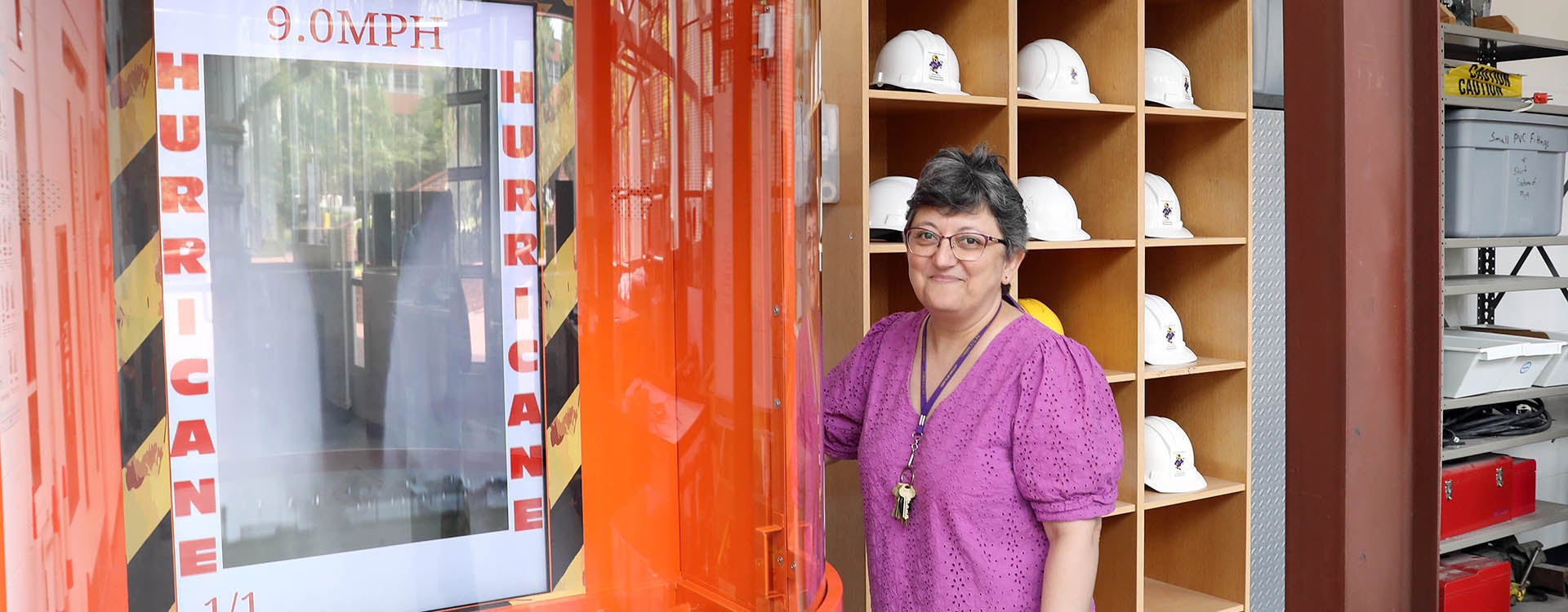Simulating the Storm
ECU professor stresses hazard-resistant construction with hurricane simulator
As a doctoral student in Louisiana, Dr. Carol Massarra experienced her first hurricane.
“I did not expect it to be that bad,” said Massarra, assistant professor in the East Carolina University Department of Construction Management. “People told me it will be bad, but I was not expecting it. It was really bad.”
She saw the destruction firsthand as part of a damage assessment team with her doctoral professor.
“That was really devastating. The damage was terrible,” she said. “The houses were in some areas completely damaged by the hurricane.”

Dr. Carol Massarra, assistant professor in the Department of Construction Management, stands by a hurricane simulator she plans to incorporate into her structural analysis classes. Winds in the simulator can reach 74 mph.
Massarra’s research interests include hazard resistant construction — including earthquakes, floods, and of particular interest in eastern North Carolina, hurricanes. She teaches structural analysis courses at ECU. As such, she now has a unique tool to help inform ECU and other students about the importance of good construction — a hurricane simulator.
“It simulates a category one hurricane,” said Massarra.
The simulator is slightly larger than an old-fashioned enclosed phone booth, large enough for one or two people to fit inside. A flip of a switch produces a light breeze at first that continues to strengthen until reaching 74 mph, a minimal hurricane on the Saffir-Simpson scale.
Massarra used the simulator — located in the Science and Technology Building — during ECU’s Summer Ventures in Science and Mathematics youth camp through the College of Education.
“I worked with kids on building houses from cardboard, and then we tested the houses using the hurricane simulator machine,” she said. “When they got out of the machine, they looked at what they would do differently to improve their houses. Forty-six participants came here and tried it. They had a good time.”
Massarra also has plans to incorporate the simulator into her structural analysis classes. She said the goal is to spread the importance of good designs, engineering and construction methods. They can be the difference between an intact building and a pile of rubble — and more importantly, between life and death.
“The connection between the roof and the walls is very important,” Massarra said. “There are multiple ways to strengthen your house, like elevating the house will help a lot especially for flooding.”
She hopes the hurricane simulator opens doors for some collaborative research within the College of Engineering and Technology as well as with others throughout the university.
“Maybe we can use this machine to help people in eastern North Carolina,” she said.
Weather forecasters expect the rest of the Atlantic hurricane season to be active. The season runs through Nov. 30, with September marking the peak of the season.
“I’ve never been in a hurricane here,” said Massarra, who has worked at ECU since 2019. “Hopefully I will not be.”
